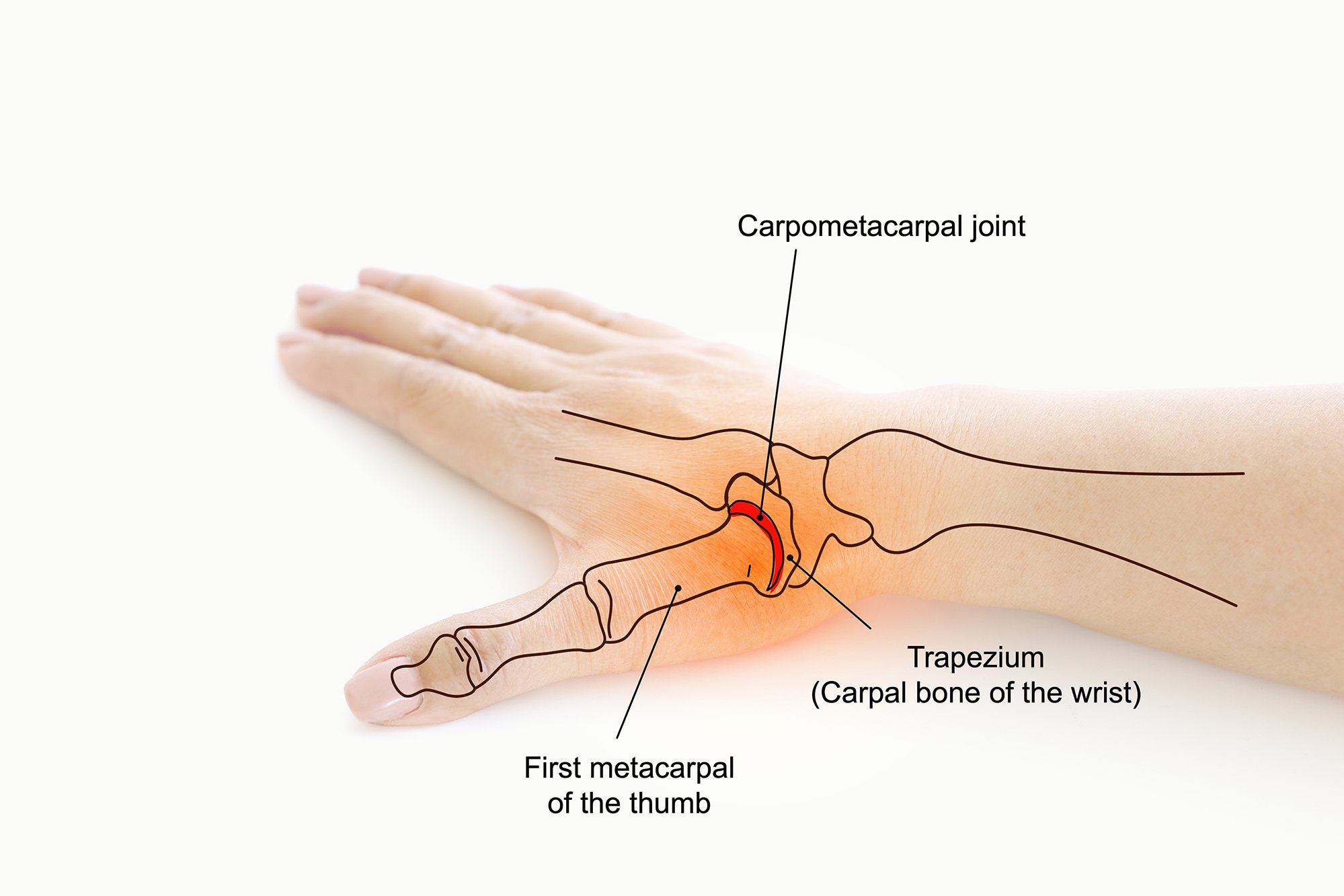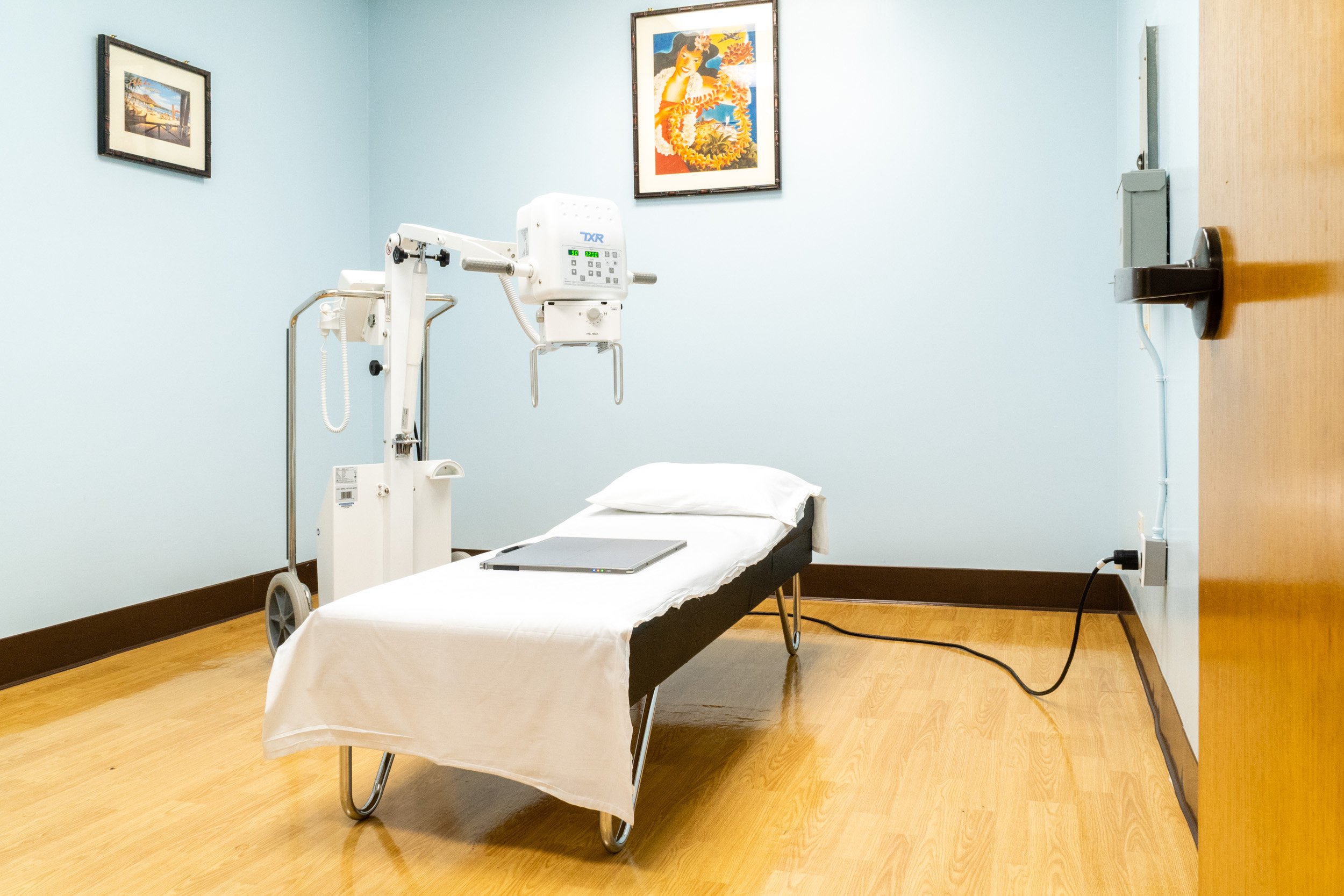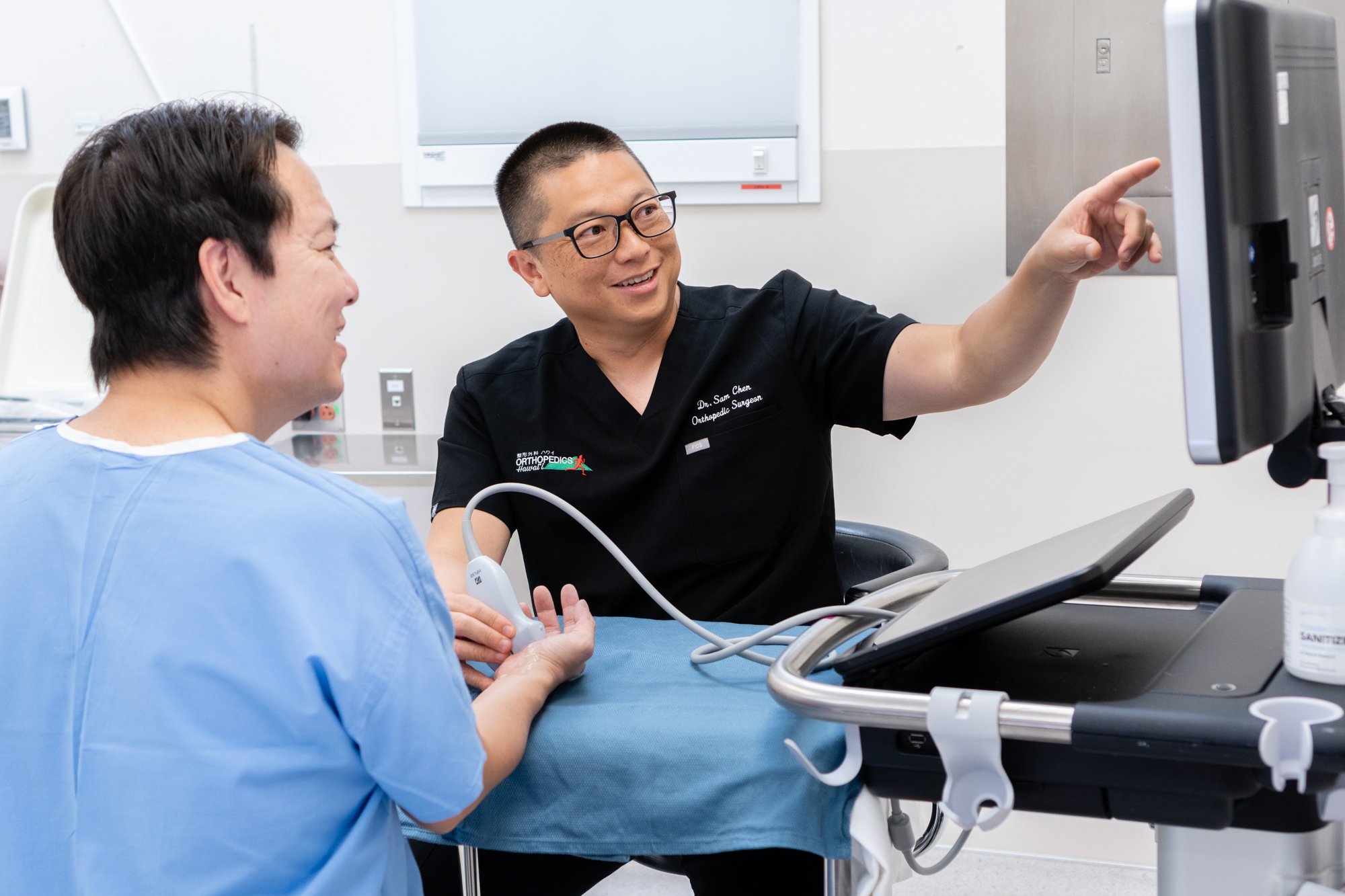Pain, Swelling or Decreased Strength in Your Thumb? Learn about Thumb Arthritis.
What is Thumb Arthritis?
We often take our thumbs for granted, but once pain sets in, everyday tasks like opening jars or turning door knobs become difficult and painful. Thumb arthritis, which is the second most common type of arthritis in the US, often occurs with aging when cartilage wears away from the ends of the bones that form the joint at the base of your thumb. Also known as the carpometacarpal (CMC) joint, this joint helps you grip, swivel, pivot and pinch items in with your hand.
Thumb arthritis symptoms include severe pain, swelling, decreased strength and range of motion. Treatment may consist of splints, exercises, work/life modifications and medication. Severe cases of thumb arthritis may require surgery.
At Orthopedics Hawaii surgery is always the last course of action. Hand specialist, Dr. Sam Chen, gets to know each patient and their unique case. He works together with our patients to determine the best course of action, normally beginning with the least invasive treatment plans and then progressing to an elevated treatment plan if needed.
Learn more about the symptoms, causes, risk factors, diagnosis and treatment plans for thumb arthritis in this article.
Causes
There are various types of arthritis, but the one that usually affects the thumb is osteoarthritis, which is also the most common type of arthritis. In a normal thumb joint, cartilage covers the ends of the bones allowing them to glide smoothly against each other. With thumb arthritis, the cartilage starts to break down and worsens over time so as the bones rub against one another it causes friction and joint damage. The damage to the joint may cause noticeable lumps or the growth of new bone along the sides of the existing bone (bone spurs).
While thumb arthritis is common with aging, previous injury or trauma to the thumb joint increases its likelihood. Other conditions, such as lupus and rheumatoid arthritis, may also cause deterioration of the CMC joint.
Symptoms
The most common symptom of thumb arthritis is pain in the thumb. It can make simple daily tasks difficult and painful. Other symptoms may include the following:
Swelling, stiffness and tenderness or pain at the base of the thumb, bottom-most thumb joint or in the palm of your hand near your thumb.
Gripping or pinching may be painful, such as opening a jar or buttoning a shirt.
An ache or discomfort after prolonged use of the thumb.
An enlarged thumb joint.
A bony bump on your bottom thumb joint that limits your motion.
Risk Factors
Factors that can increase your risk of thumb arthritis include:
Female - Women have more joint laxity (looser joints) which can cause malalignment of the joint, cartilage wear and arthritis.
Age - Thumb arthritis typically occurs after age 40.
Obesity
Certain hereditary conditions.
Fractures or a history of injuries to your hand or thumb joint.
Diseases such as osteoarthritis, which is the most common cause of thumb arthritis, and rheumatoid arthritis can also affect the CMC joint.
Activities and jobs that put high stress on the thumb joint.
How is Thumb Arthritis Diagnosed?
During your consultation, Dr. Chen may conduct one or more of the following tests to determine if you have thumb arthritis.
History of Symptoms
During your visit, we will discuss your symptoms, when they began, any related injuries, review your medical history and discuss your general health.
Physical Examination
Dr. Chen will conduct a physical examination. He will first look for any noticeable swelling or lumps on your joints.
He will then hold your joint while moving your thumb with pressure against your wrist bone. If this produces a grinding sound or causes pain or a gritty feeling the cartilage has likely worn down and the bones are rubbing directly against each other.
X-ray
Depending on your medical history, symptoms and the other tests performed, Dr. Chen may order an X-ray of the affected thumb to confirm the diagnosis.
X-rays can reveal signs of arthritis including:
Bone spurs
Worn-down cartilage
Loss of joint space
If an X-ray is needed we have a digital X-ray machine in-house. So we can capture your imaging quickly and conveniently. There is no need to schedule another appointment at an outside imaging center.
Treatment Options
At Orthopedics Hawaii, we believe surgery should always be the last resort. Non-surgical treatments can be effective for less severe cases and allow you to continue with your daily activity normally. If you have a severe case we may discuss a surgical treatment plan with you.
Non-surgical Treatments
Non-surgical options are usually tried first. They may include:
Splint
To support your joint and limit the movement of your thumb and wrist a splint may be worn throughout the day and night. Some patients choose to wear the splint only at night while they are sleeping or when they are participating in an activity where frequent hand and thumb movement is needed.
Splints can help:
Decrease pain
Encourage proper positioning of your joint while you complete tasks
Rest your joint
There are a variety of splints from soft versions, similar to a biking glove with a strap that stabilizes your thumb, to hard plastic splints, which may be purchased off the shelf or custom-made.
Heat and/or Ice
Applying a heating pad or icing the joint for 5 to 15 minutes throughout the day may also help lower the inflation and pain. Some patients respond better to heat over ice, or vice-versa. It’s best to try both to discover what works best for you.
Paraffin Baths (Warm Wax)
Paraffin wax is commonly used in health and beauty treatments to soften the skin on the hands, cuticles and feet.
Similar to heat therapy, it can increase blood flow, relax muscles, and decrease joint stiffness.
Paraffin wax can also lower muscle spasms and inflammation.
Medication
To relieve pain medication may be prescribed including:
Topical medications, such as capsaicin or diclofenac, which are applied to the skin over the joint
Over-the-counter pain relievers, such as acetaminophen (Tylenol, others), ibuprofen (Advil, Motrin IB, others) or naproxen sodium (Aleve)
Prescription pain relievers, such as celecoxib (Celebrex) or tramadol (Conzip, Ultram)
Corticosteroids
If medication, splits and the other treatments detailed above do not help, a long-acting corticosteroid can be injected into your thumb joint.
Corticosteroid injections can temporarily relieve the pain by decreasing inflammation and swelling.
A treatment plan that includes multiple corticosteroid injections year after year is not recommended. Too much corticosteroid in the body may result in infection.
Home & Workplace Adjustments
Modifying your home and workspace activities is another area to focus on. Simple modifications of your environment can decrease your symptoms. These changes may include:
Purchasing adaptive equipment that is designed for people with limited hand strength. These items can include jar openers, key turners and large zipper pulls.
Replace door handles, which you must grasp with your thumb, with levers.
Avoid repetitive activities such as using scissors or sewing.
Purchase larger grips for your pens and pencils at work and look for kitchen utensils and gardening tools with larger handles so you don’t have to grip them as tightly.
Instead of holding the phone to your ear, use the speaker phone.
Squeeze excess water from a washcloth by wrapping it around a faucet and squeezing gently, rather than wringing it out.
Surgical Treatments
If non-surgical treatments do not improve your situation surgery may be the next step. Surgical treatments include:
Joint fusion (arthrodesis) - The bones in the affected joint are permanently fused. The fused joint can bear weight without pain, but has no flexibility.
Osteotomy - To help correct deformities, the bones in the affected joint are repositioned.
Trapeziectomy - One of the bones in your thumb joint (trapezium) is removed.
Joint replacement (arthroplasty) - All or part of the affected joint is removed and replaced with a graft from one of your tendons.
All of the surgeries listed above can be performed on an outpatient basis. Following the procedure, you can expect to wear a splint or cast over your thumb and wrist for up to 6 weeks. Once the cast is removed we can write you a prescription for physical therapy to help you regain the strength and movement in your hand.
How Can Orthopedics Hawaii Help?
If you are experiencing thumb pain come in to see us. All of our patients are seen by Hand Specialist and Orthopedic Surgeon Dr. Sam Chen. We recommend scheduling an appointment by calling (808) 744-3360 or emailing aloha@orthopedicshi.com.




